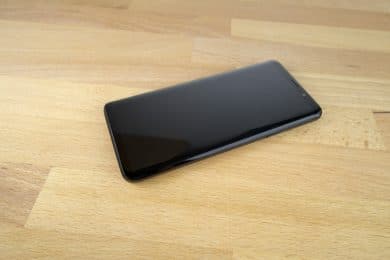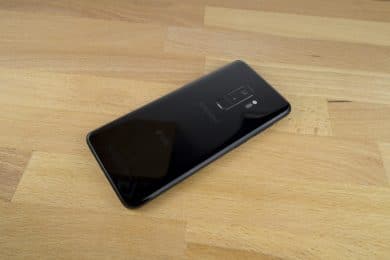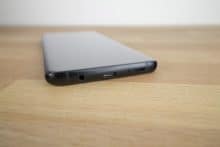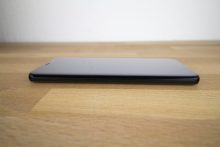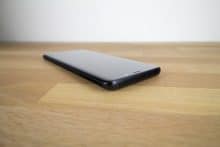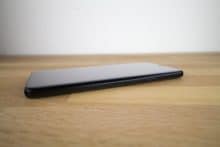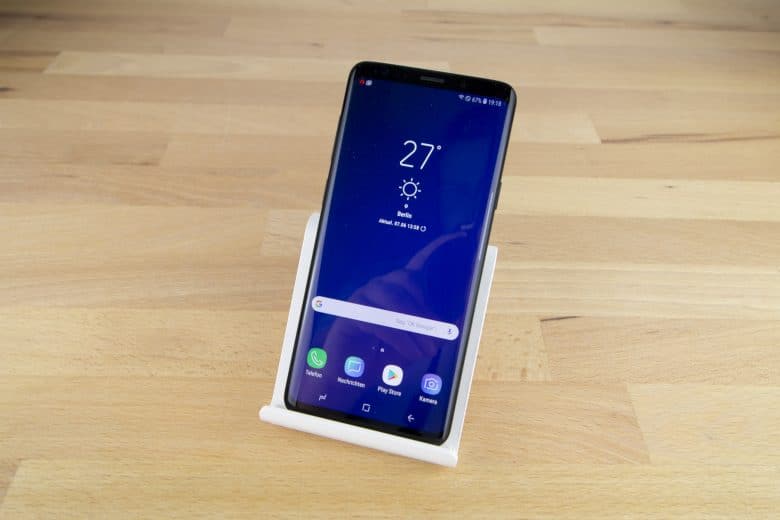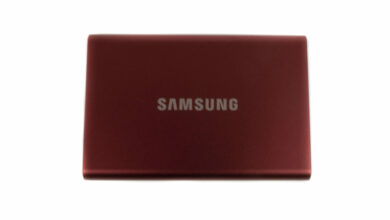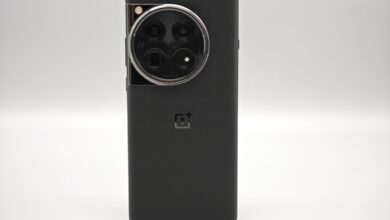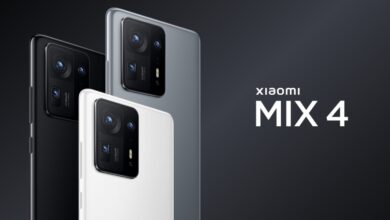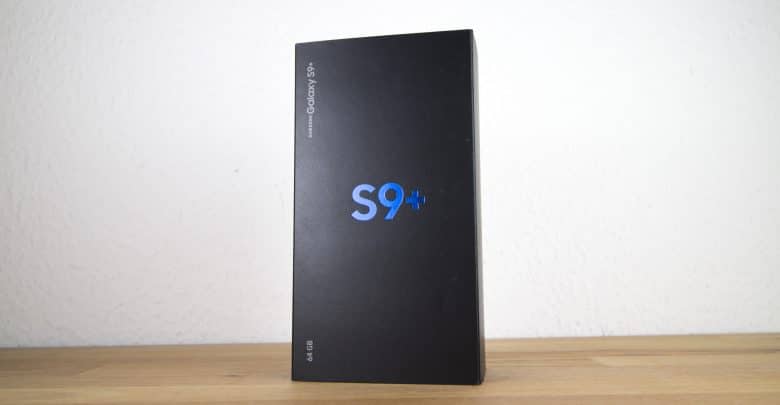
The S9 Plus is the most expensive model of the Galaxy series to date. With an introductory price of more than 1,000 euros – a novelty at Samsung – a lot can be expected from the new top model of the Asian manufacturer. The following test should clarify whether it can live up to these high expectations and put the strong competition in its place.
Design and Workmanship
At first glance, the Galaxy S9 Plus is nothing special. It doesn’t stand out from other Samsung smartphones in purely optical terms. Those who expected a revolution in design technology will therefore experience a bitter disappointment. To be fair, however, it should be mentioned that the mobile phone looks very noble. However, since this is also the case with last year’s model, the absence of a next step may seem slightly disappointing. At this point, however, it should not go unmentioned that conventional things can also be good – not every new model can bring about a radical change. Moreover, it is currently difficult to make smartphones visually more innovative in any way than they already are.
This is how the S9 Plus presents itself in the curved Edge design, which a year ago was considered to be extremely innovative, but today is hardly to be emphasized. In combination with the noble colours, the beautifully looking curved ends and the strong contrast of the display, however, the design is extremely attractive.
The mobile phone is available in this country in the colours Lilac Purple, Midnight Black, Coral Blue, Titanium Grey and Sunrise Gold. Differences to the predecessor model can only be found on closer inspection of the device. The top and bottom frames of the S9 Plus are slightly narrower.
With regard to workmanship, points of criticism can hardly be found. Only the sensitivity of the glass, which has already been criticized in various media, can be cited as a criticism of the workmanship. Otherwise it can be said that Samsung relies on high-quality materials and processes them well. The mobile phone lies accordingly well in the hand.
Hardware
| Display | 15.8 cm (6.2 inch) Super AMOLED |
| Resolution | 1,440 x 2,960 pixels (530 ppi) |
| Memory | 64 GB, expandable with up to 400 GB |
| RAM | 6 GB |
| Processor | Exynos 9810 (4x 2.7 GHz, 4x 1.7 GHz) |
| GPU | Mali G72 MP18 |
| Dimensions | 158.1 x 73.8 x 8.5 mm |
| Weight | 189 g |
| back camera | Dual camera with laser and dual pixel auto focus, OIS, sensor 1: 12 MP f/1.5 & f/2.4 aperture; sensor 2: 12 MP f/2.4 aperture |
| Front camera | 8 MP with f/1.7 aperture and autofocus |
| Battery | 3,500 mAh |
| Connectivity | WiFi 802.11 a/b/g/n/ac (2.4 and 5 GHz), VHT-80-MU-MIMO, 1024 QAM, Bluetooth 5.0 (LE up to 2 Mbps), Ant+, USB Type C connector, NFC, GPS, Glonass, Galileo, BeiDou, LTE Cat. 18, Dual-SIM (Duos version) |
| Price | € 279.99 * |
Display
The display of the Plus model is once again significantly larger than the already large display of the “normal” S9 model. With a screen diagonal of 6.2 inches, it really looks huge. The display is an OLED display with a resolution of 2,960 x 1,440 pixels and pin sharp resolution. Blurred or otherwise not in the proximity of perfection settled representations are at the latest with the Galaxy S9 Plus history. As already mentioned, the model is designed in the Edge design – the display bends over the edge.
However, the quality of the display is not only convincing in theory, but also in practice. Samsung thus confirms the high significance of the displays. So far, a further increase in display quality has been observed with every Galaxy model. The S9+ is no exception.
All images are rich in contrast, razor sharp and bright. Furthermore, the display convinces with its dynamics, the rich colours and the interaction of all these factors. The standard brightness is 770 cd per square metre, which is an enormous improvement over the previous model. The coverage of the RGB color space is 150 percent, which is sensational. In addition, the display is very easy to read in sunlight. An average mobile phone can hardly be read when exposed to direct sunlight. The S9+, on the other hand, is easy to read even in such bad conditions due to the high quality of the display.
There’s nothing much more you can say about the display. To summarize the summary of the previous findings in all brevity: The display is completely convincing.
Camera
The camera is almost habitually given special attention in newer smartphones – we don’t want to deviate from this convention in this test report and thus also subject the camera S9+ to an in-depth examination in all facets.
For the first time in this series, a dual camera can be found on the back of a model. The vertical arrangement of this camera is not only valuable in terms of design, but also allows the – probably intended – comparison with the Galaxy Note 8, whose camera is arranged in the same way. Technically, the S9 Plus camera is an improved version of this camera, so to speak. The main camera has twelve megapixels and works with dual-pixel technology. In addition, there is the telephoto lens, which is also twelve megapixels strong and has a double optical zoom, which has a positive effect. According to Samsung, the camera is also suitable for use in poor lighting conditions. A particularly light-sensitive f/1.5 aperture is available for this purpose. In fact, photographs taken are of high quality even in poor lighting conditions. In comparison with competitors and predecessor models, the photos of the S9+ are somewhat darker, but much more detailed. Ultimately, the camera of the smartphone under test does not deliberately illuminate the object being displayed, which leads to the positive effects described, but goes hand in hand with the apparent disadvantage of the overall darker display. In the test, however, this supposed disadvantage does not stand out too negatively – the positive effects it brings with it clearly outweigh.
Especially worth mentioning is the variable aperture, which can hardly be found in any other smartphone. Depending on the situation, a different aperture is automatically selected. In this way the adaptation to the given lighting conditions takes place. However, the variable aperture is only available with the main camera. The telephoto lens is equipped with a fixed f/2.4 aperture, which is quite dim, but offers the advantage of double zoom without loss of image sharpness.

All in all, the cameras offer numerous possibilities to shoot extremely high-quality photos, and are therefore very positive. You can download the uncompressed pictures as usual here.
As far as the video function is concerned, the super slow motion mode should be mentioned above all, which was quite impressive in the test. With this you can create truly remarkable pictures. High-quality slow-motion shots with 960 frames per second are possible. The disadvantage of the S9 Plus is the poorer resolution (720p) and the limitation of the recording time to 0.2 seconds. Otherwise, the smartphone can record video at up to 60 frames per second in 4K.
Performance & Benchmarks
The Exynos 9810 is used as processor. This is one of the most powerful mobile processors currently available. The processor is equipped with 6 GB of RAM. Overall, the processor should be 30 percent more powerful than the processors used in the previous Android top models. The S9+ can therefore be expected to deliver enormous performance. This expectation is fulfilled in the test. The mobile phone is extremely fast and reacts to every input in fractions of a second. This enormous performance is achieved above all by the eight cores of the extraordinary processor, which achieve clock rates of 2.7 GHz and 1.7 GHz, respectively, half each.
With such a powerful processor, the new top model of the Galaxy series clearly puts its predecessors and competitors of other manufacturers in their place. At least in everyday testing, the processor in combination with the generous RAM ensures the highest performance and extraordinary speed. Especially in a direct comparison with other smartphones, these points stand out clearly – and very positively. The Galaxy S9+ clearly stands out from other models, especially for complex applications and multitasking.
Also the internal memory of the device can be seen. Users can store up to 256 GB of data. The memory can be extended by an mSD card.
| wdt_ID | Smartphone | OpenGL Manhattan | OpenGL Car Chase | T-Rex |
|---|---|---|---|---|
| 1 | Moto X Force | 11,0 | 7,3 | 42,0 |
| 2 | Neffos C5 Max | 4,4 | 2,1 | 0,0 |
| 3 | UMi London | 0,0 | 0,0 | 7,3 |
| 4 | Gigaset GS160 | 3,4 | 0,0 | 11,0 |
| 5 | Sony Xperia XZ | 46,0 | 20,0 | 59,0 |
| 6 | Kodak Ektra | 9,6 | 0,0 | 35,0 |
| 7 | Huawei Mate 9 | 32,0 | 14,0 | 60,0 |
| 8 | Huawei Nova | 10,0 | 3,6 | 22,0 |
| 9 | BQ Aquaris X | 9,6 | 3,5 | 22,0 |
| 10 | Neffos X1 | 11,0 | 3,9 | 22,0 |
| Smartphone | OpenGL Manhattan | OpenGL Car Chase | T-Rex |
| wdt_ID | Smartphone | Sling Shot | Sling Shot Extreme | Ice Storm Unlimited | Ice Storm Extreme |
|---|---|---|---|---|---|
| 1 | Moto X Force | 1.348 | 0 | 0 | |
| 2 | Neffos C5 Max | 284 | 6.816 | 4.361 | |
| 3 | UMi London | 0 | 2.827 | 1.951 | |
| 4 | Gigaset GS160 | 161 | 3.710 | 2.333 | |
| 5 | Sony Xperia XZ | 2.416 | 0 | 0 | |
| 6 | Kodak Ektra | 1.023 | 15.606 | 9.343 | |
| 7 | Huawei Mate 9 | 2.688 | 29.138 | 13.288 | |
| 8 | Huawei Nova | 461 | 13.637 | 8.091 | |
| 9 | BQ Aquaris X | 847 | 13.986 | 8.335 | |
| 10 | Neffos X1 | 481 | 9.294 | 5.486 | |
| Smartphone | Sling Shot | Sling Shot Extreme | Ice Storm Unlimited | Ice Storm Extreme |
| wdt_ID | Smartphone | Score |
|---|---|---|
| 1 | Moto X Force | 4.115 |
| 2 | Neffos C5 Max | 2.892 |
| 3 | UMi London | 2.475 |
| 4 | Gigaset GS160 | 2.600 |
| 5 | Sony Xperia XZ | 5.550 |
| 6 | Kodak Ektra | 3.975 |
| 7 | Huawei Mate 9 | 6.431 |
| 8 | Huawei Nova | 4.594 |
| 9 | BQ Aquaris X | 4.889 |
| 10 | Neffos X1 | 3.183 |
| Smartphone | Score |
| wdt_ID | Smartphone | AnTuTu Score |
|---|---|---|
| 1 | Moto X Force | 22.297 |
| 2 | Neffos C5 Max | 37.569 |
| 3 | UMi London | 22.297 |
| 4 | Gigaset GS160 | 29.251 |
| 5 | Sony Xperia XZ | 33.943 |
| 6 | Kodak Ektra | 84.997 |
| 7 | Huawei Mate 9 | 139.020 |
| 8 | Huawei Nova | 63.206 |
| 9 | BQ Aquaris X | 66.149 |
| 10 | Neffos X1 | 45.024 |
| Smartphone | AnTuTu Score |
| wdt_ID | Smartphone | Single-Core | Multi-Core |
|---|---|---|---|
| 1 | Moto X Force | 2.719 | 2.618 |
| 2 | Neffos C5 Max | 1.063 | 1.563 |
| 3 | UMi London | 685 | 1.146 |
| 4 | Gigaset GS160 | 820 | 1.298 |
| 5 | Sony Xperia XZ | 3.585 | 3.271 |
| 6 | Kodak Ektra | 2.167 | 3.731 |
| 7 | Huawei Mate 9 | 3.270 | 4.519 |
| 8 | Huawei Nova | 1.433 | 2.661 |
| 9 | BQ Aquaris X | 1.444 | 2.279 |
| 10 | Neffos X1 | 1.205 | 2.164 |
| Smartphone | Single-Core | Multi-Core |
| wdt_ID | Smartphone | Score |
|---|---|---|
| 1 | Moto X Force | 2.803 |
| 2 | Neffos C5 Max | 2.697 |
| 3 | UMi London | 2.162 |
| 4 | Gigaset GS160 | 1.794 |
| 5 | Sony Xperia XZ | 4.569 |
| 6 | Kodak Ektra | 5.869 |
| 7 | Huawei Mate 9 | 7.316 |
| 8 | Huawei Nova | 3.325 |
| 9 | BQ Aquaris X | 3.461 |
| 10 | Neffos X1 | 2.914 |
| Smartphone | Score |
| wdt_ID | Smartphone | Single-Core | Multi-Core |
|---|---|---|---|
| 1 | Moto X Force | 1.115 | 4.376 |
| 2 | Neffos C5 Max | 602 | 2.468 |
| 3 | UMi London | 371 | 1.064 |
| 4 | Gigaset GS160 | 535 | 1.493 |
| 5 | Sony Xperia XZ | 1.626 | 3.872 |
| 6 | Kodak Ektra | 1.648 | 4.053 |
| 7 | Huawei Mate 9 | 1.934 | 5.998 |
| 8 | Huawei Nova | 830 | 3.004 |
| 9 | BQ Aquaris X | 921 | 4.495 |
| 10 | Neffos X1 | 731 | 2.738 |
| Smartphone | Single-Core | Multi-Core |
DeX, Bixby, AR-Emojis and Other Extras
Some nice extras are DeX and Bixby. Via DeX Pad the smartphone can be connected to a monitor and used as a PC replacement. This feature is handy, but it is hardly needed by the average user. According to Samsung, it is particularly suitable for the use of office solutions and similar programs. The touch screen of the mobile phone, which functions as a kind of mobile PC, can also be used as a mouse pad if desired. We have not tested the new Dex Pad with the Galaxy S9. The Dex Pad extends the possibilities of the user, which is positive in principle, but will be completely uninteresting for most users,
Bixby’s a lot more interesting. It is an ordinary smartphone wizard, the detailed description of which is not necessary due to the popularity of such programs. Interesting is the integration of Bixby into the camera of the S9+. For example, translations can be carried out in real time. If the camera is aiming at a foreign-language sign, Bixby immediately translates the text to be read on the sign on command. However, the text is not displayed in a language or in an inappropriate way – instead, it replaces the actual text to be read on the sign in the camera app. This function is interesting in any case and therefore deserves a mention. Unfortunately, Samsung Language Assistant is not yet particularly mature. The additional Bixby key on the smartphone is therefore more annoying than helpful.
In addition, the Galaxy S9+ has the ability to generate AR-Emojis. The camera app is also used for this purpose. All in all this is a nice gimmick.
Further worth mentioning are the accommodation of the fingerprint scanner at the back of the case – a scanner integrated into the display can apparently not yet be implemented in mass production – as well as the Dolby-Atmos support of the two integrated loudspeakers. This is especially impressive when watching movies and provides a cinematic feeling in small.
Battery
The smartphone’s battery is less outstanding. With a capacity of 3,500 mAh, this can be described as average in size. In the test, a fully charged battery will last for the whole day with “normal” use of the mobile phone. However, those who use their smartphone in almost every occasion could be disappointed by the comparatively lean battery life. The battery will not last much longer than 9 hours if the device is used permanently.
| wdt_ID | Smartphone | Score |
|---|---|---|
| 1 | Moto X Force | 549 |
| 2 | Neffos C5 Max | 0 |
| 3 | UMi London | 248 |
| 4 | Gigaset GS160 | 442 |
| 5 | Sony Xperia XZ | 391 |
| 6 | Kodak Ektra | 293 |
| 7 | Huawei Mate 9 | 505 |
| 8 | Huawei Nova | 317 |
| 9 | BQ Aquaris X | 553 |
| 10 | Neffos X1 | 345 |
| Smartphone | Score |
Conclusion on the Samsung Galaxy S9+ Review
All in all, it is a high-quality smartphone that has some interesting specifications. Thanks to the extremely powerful processor and the large RAM, the S9+ convinces in the test with its outstanding performance and speed. In addition, the camera with its variable aperture and double zoom is particularly striking. In addition, there are some nice extras that are not absolutely necessary, but are welcome at such a high price. Real points of criticism apart from the astronomical price, which is probably only appropriate for true mobile phone friends, can hardly be found. Fortunately, the price has already adjusted to the market situation and so the smartphone is currently available for € 279.99 *.
Samsung Galaxy S9+
Workmanship
Hardware
Multimedia
Performance
Battery
Value for Money
An exceptionally powerful, convincing smartphone with no criticism beyond price.
